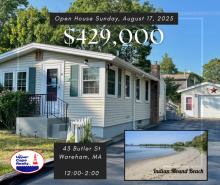Sewer rate billing system may change
Whether a sewer user sends a trickle or a torrent of water to the sewage treatment plant, they pay the same rate.
That billing system is unfair, says Water Pollution Control Director Guy Campinha and the town’s Sewer Commissioners are looking to make a change.
“Think of it this way. I’ve got a little old lady that’s 85 years old who probably uses a cup of water a day,” said Campinha. “Then I’ve got somebody who has a business that’s 10,000 square feet and cranking through water and they pay the same rate. Is that fair?”
The Commissioners will seek public feedback on a new billing system through a survey to be mailed with next month’s sewer bill. Campinha said the Sewer Commissioners have heard ratepayers cries for a system based on water usage. The hope is answers will guide the commission crafting a plan for a different billing system, he said.
With approximately 60 percent of residences and businesses hooked into the town’s sewer system, it made sense to seek their input on any changes, said Campinha.
“After all, they’re the ratepayers. We work for them,” he said. “We’re going to ask them how we should proceed.”
Currently, sewer users pay $596 per “equivalent dwelling unit.” That remains unchanged from last year’s rate and was approved at the Sewer Commissioners’ July 14 meeting. The equivalent dwelling unit, or EDU, is a flat annual fee.
Users receive a bill twice a year for $298 per EDU.
Campinha explained that a formula determines how much businesses or residential properties of varying sizes owes. For example, a single home is charged one EDU while a duplex would be charged two EDUs.
Business rates are broken down differently, Campinha said. Restaurants are charged one EDU per 12 seats, gas stations are charged one EDU per service island and hospitals are charged one EDU per patient bed.
Based on survey responses, Campinha said it’s likely the Sewer Commissioners will adopt a hybrid billing system that sets a flat fee, but would charge users for every gallon used over a pre-determined amount, yet to be set.
Right now, the sewer department uses a parameter that assumes each person in town uses 75 gallons of water per day. That includes water for drinking, sewer use and cleaning, said Campinha.
Any change will require the cooperation of the town’s two water districts, Wareham and Onset.
Campinha explained that the districts are separate entities from the town’s treatment plant, essentially operating as their own governments, setting rates, raising capital and performing other duties based with the consent of voters in those districts.
A hybrid system would allow the sewer plant’s fixed costs – such as payroll, utilities, maintenance, etc. – to be covered while making sure heavy users pay their fair share, according to Campinha.
“Heavy water users use more, so in theory, they should make a larger contribution to their bill,” said Campinha. “If those ratepayers are giving us more to treat then why should they pay the same as the lady who gives us one cup of water to treat. We’re trying to make that more equitable”
Sewer Commissioner Chair James Giberti agreed.
“The Sewer Commissioners are committed to changing the EDU rate to something that’s more fair and come up with a new rate that’s based on water consumption,” he said. “Hopefully, people will fill out the surveys and help us accomplish that.”












